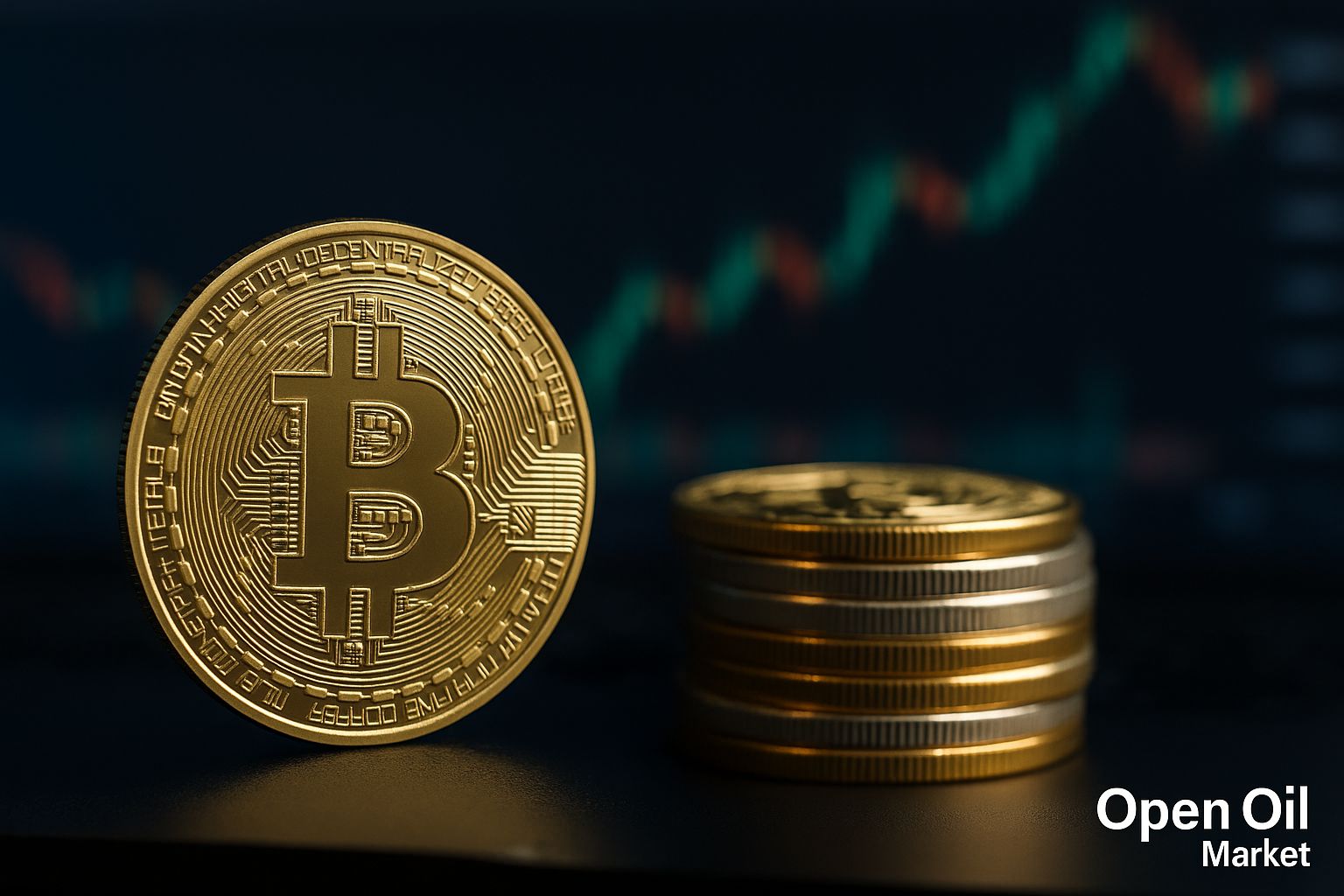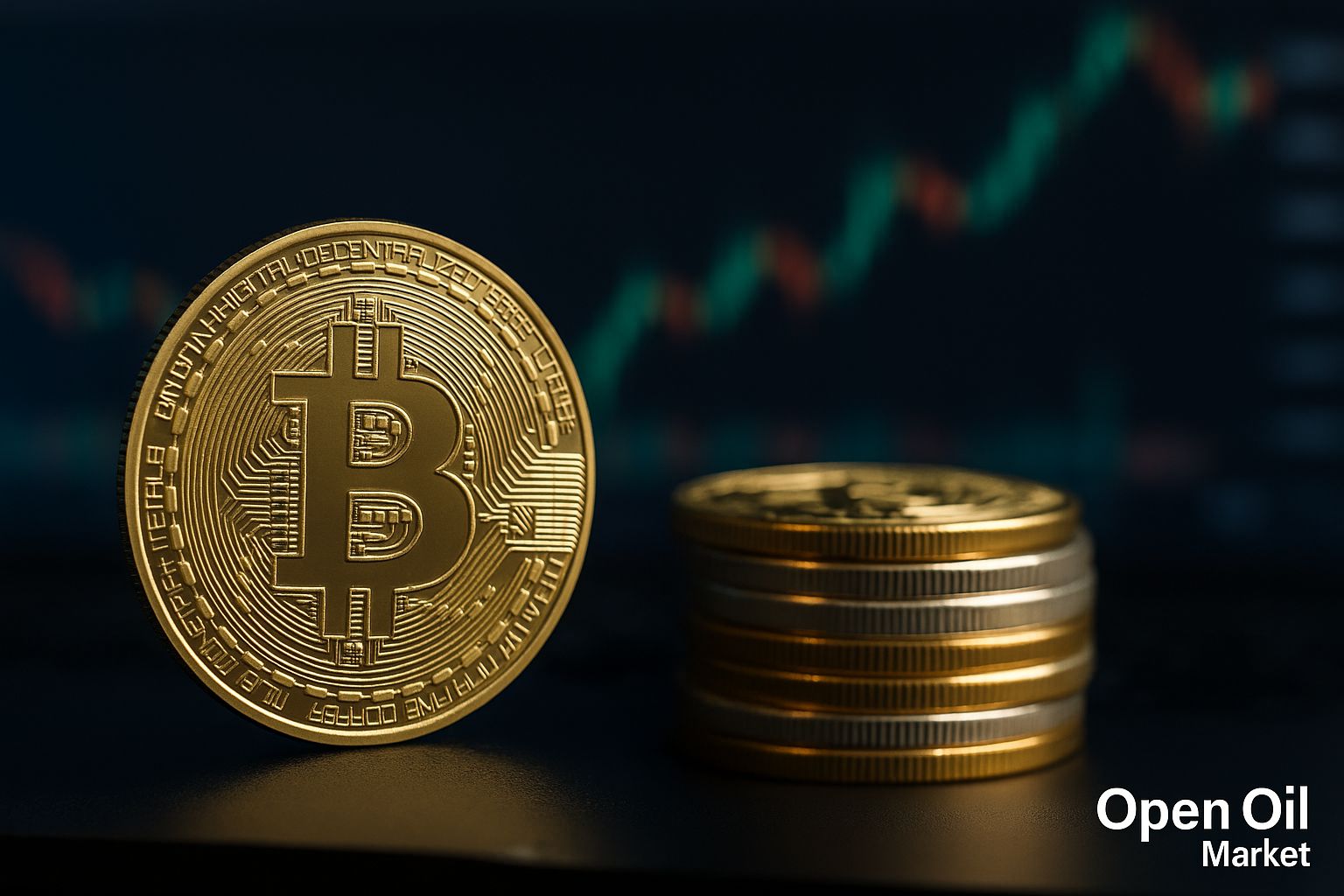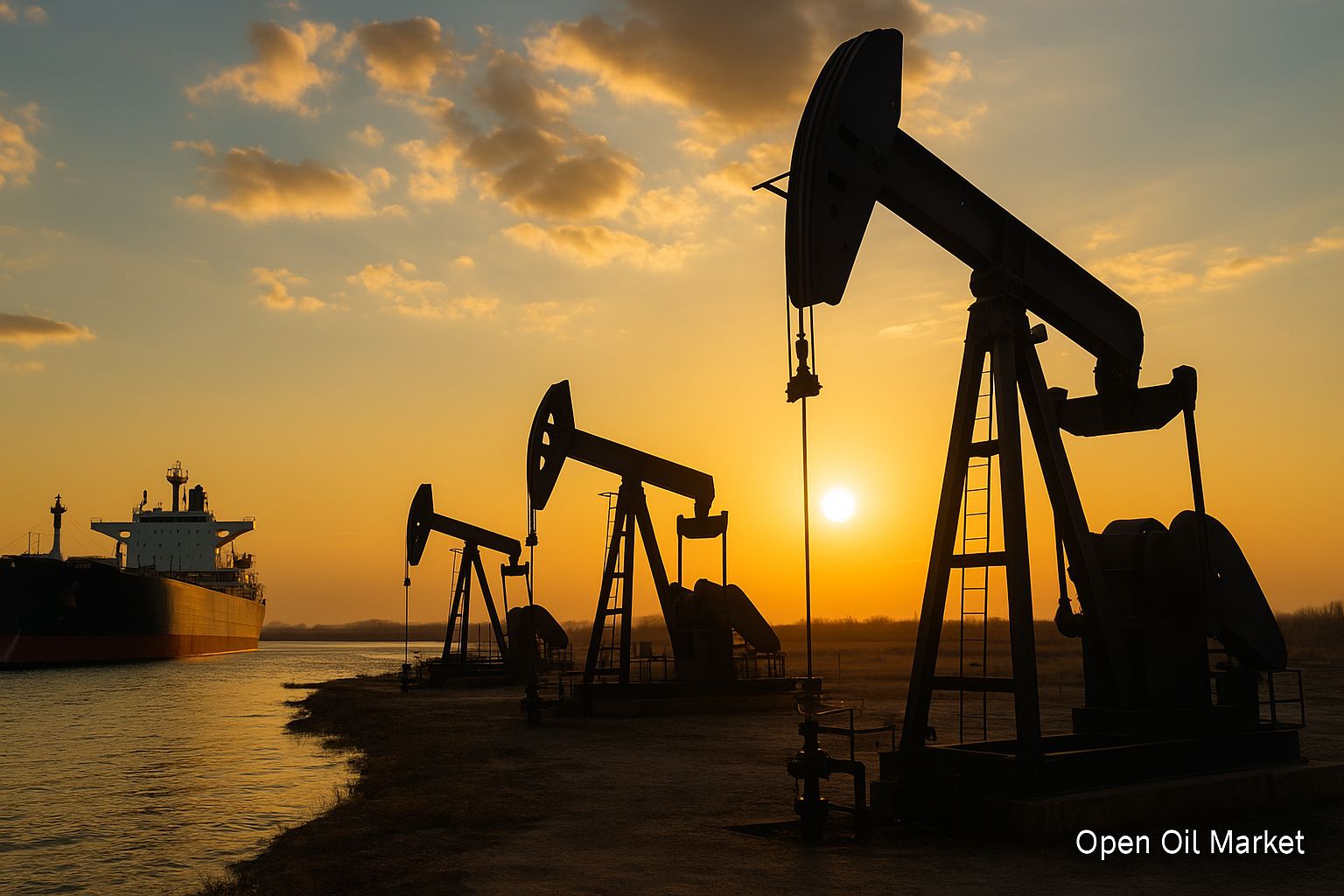
Current News from the Fuel and Energy Complex as of 28 October 2025: Sanction Risks, Brent Above $65, Record Gas Reserves, Record Investments in Renewable Energy, and Stabilisation of the Russian Fuel Market. An Overview of Key Events and Trends in Global Energy for Investors and Market Participants.
As of 28 October 2025, the global fuel and energy complex continues to face a severe geopolitical standoff, yet there are signs of relative stability in commodity markets and even some positive developments. The sanctions confrontation between Russia and the West remains unabated: the United States has imposed direct sanctions on major Russian oil and gas companies (including Rosneft and LUKOIL), urging allies to completely withdraw from trading Russian energy resources and shut down circumvention routes for exports. The European Union, for its part, is tightening restrictions, closing remaining loopholes (for instance, by banning the re-export of oil products made from Russian crude through third countries). Under pressure from the West, it has been stated that India and China are prepared to reduce purchases of Russian oil – though New Delhi and Beijing have not officially confirmed such plans, these signals alone are amplifying uncertainty in the market.
Concurrently, global commodity markets are demonstrating relatively calm dynamics. After pausing at multi-month lows earlier, oil prices experienced a sharp rebound last week (with Brent gaining around 8%, marking the strongest weekly increase since June) due to fears of supply disruptions amid new sanctions against Russia. At the start of the current week, the rise has been followed by a correction: investors have partially locked in profits, with Brent holding around $65 per barrel (WTI approximately $61), still above levels from a month ago. Additional support for the markets has come from optimism in the global economy: a meeting is anticipated between US President Donald Trump and Chinese Chairman Xi Jinping, aiming to conclude a trade agreement and avert mutual tariff increases. The prospects for easing trade disputes between the US and China improved forecasts for demand for commodities. Thus, despite geopolitical tensions, commodity prices remain relatively stable. The European gas market is entering winter with record fuel reserves, with the EU’s underground gas storage (UGS) filled to over 95%, allowing gas prices to decrease to a comfortable level (TTF index around €30 per MWh), assuming mild weather. The global energy transition is accelerating: investments in renewable energy sources are breaking historical records, and the share of clean sources in global generation is steadily increasing (in 2025, wind and solar generation together produced more electricity than coal-fired plants for the first time). Nevertheless, oil, gas, and coal continue to play a critically important role in meeting demand.
In Russia, the internal situation in the oil products market has stabilised significantly after emergency measures taken by the government. By mid-October, much of the acute shortage of gasoline and diesel observed in late summer had been eliminated: wholesale prices have retreated from peak levels, independent filling stations have resumed normal fuel sales, and supplies have returned to normal in most regions. However, authorities continue to closely monitor the situation as winter approaches – export restrictions on oil products are maintained, along with support measures for oil refineries to ensure uninterrupted supplies to the domestic market. Concurrently, long-term solutions are being discussed at industry venues: at the Russian Energy Week 2025 forum (Moscow, 15-17 October), one of the central themes was ensuring the internal market's energy resource security and redirecting exports in light of sanctions. Below is an overview of key events and trends in the oil, gas, electric power, renewable, and coal sectors, as well as the fuel market in Russia as of the current date.
Oil Market: Price Volatility, Supply Surplus, and Sanction Risks
Global oil prices remain under pressure due to supply surplus and slowing demand. Brent quotes, following a recent rebound, are hovering around multi-month lows (~$60–65 per barrel), notably below levels from a month ago. The market anticipates that by the end of the year, oil supply will exceed demand: OPEC+ countries are ramping up production, while major producers outside the cartel (the US, Brazil, etc.) are producing at record levels. Meanwhile, consumption growth has slowed amid weak economies in Europe and China, as well as previous price peaks – global oil inventories are rising, exerting downward pressure on quotes.
- Production is Rising, Demand is Slowing. From November, OPEC+ plans to increase total production quotas (~+137,000 barrels per day), while the US and Brazil have already approached record production levels. The International Energy Agency (IEA) has lowered its forecast for global oil consumption growth in 2025 to ~+0.7 million barrels per day (down from >+2 million in 2023). The supply surplus and rising oil stocks continue to apply pressure on prices.
- New Sanctions and Geopolitics. Strengthening sanctions against the Russian oil sector are maintaining market uncertainty. Sanctions have been imposed by the US against key Russian oil companies, efforts are ongoing to combat the 'shadow fleet' of tankers, and a total embargo on Russian oil is being discussed. At the same time, military risks persist: drone attacks on oil infrastructure assets within Russia are ongoing, periodically incapacitating certain refineries. Moreover, India – one of the largest buyers of Russian oil – may gradually cut its imports under pressure from the West. The loss of the Indian market would intensify pressure on Russia’s exports; however, global flows may likely be redirected towards other markets.
The oil market is balancing between fundamental and political factors. The supply surplus keeps prices low, but sanction risks and associated potential market rearrangements (such as the possible departure of Indian buyers) prevent prices from collapsing significantly below current levels. In the coming months, relatively low oil prices are expected to be maintained in the corridor around $60 per barrel, unless new shocks occur.
Natural Gas: Record Reserves in Europe and Eastern Export Shift
The gas market is entering winter in a favourable position. European gas storage facilities are filled to record levels (over 95%, 5-7% higher than last year), which has stabilised prices in the EU at around €30–35 per MWh. The risk of a repeat of last year's gas crisis has significantly diminished – although much will depend on the upcoming winter weather and the reliability of liquefied natural gas (LNG) supplies.
- Europe is Prepared for Winter. Record gas reserves create a solid safety net in case of cold spells, and demand in the EU remains restrained due to sluggish economies and high renewable energy generation. Even during abnormal cold spells, a significant portion of additional needs could be met with supplies from storage, reducing the likelihood of fuel shortages.
- Export – Towards the East. Russia is redirecting gas flows to Asian markets following a sharp decline in exports to Europe. Deliveries via the Power of Siberia pipeline to China have reached record volumes (~22 billion m³ per year), while the Power of Siberia 2 project is being prepared to partially replace the lost European market. Concurrently, Europe has ramped up LNG purchases from alternative suppliers to compensate for the cessation of imports from Russia. Global gas flow patterns have already shifted: the EU is effectively managing without Russian gas, and Russia is increasing its presence in Asia. Currently, a combination of moderate demand and high reserves keeps gas prices at a comfortable level for consumers.
Therefore, the global gas sector is entering winter with a solid buffer. The unprecedented level of European reserves and the redirection of flows allow for expectations of price stability during winter, unless extreme cold weather or other unforeseen events occur.
Electric Power: Record Demand and Network Modernisation
Global electricity consumption is heading towards a historical peak in 2025 (for the first time exceeding 30,000 TWh per year). Major economies – the US, China – are reaching record generation volumes, and in many countries in Asia, Africa, and the Middle East, rapid demand growth is driven by industrialisation and population growth. This swift increase in electricity demand necessitates proactive investments to avoid capacity shortages and power supply disruptions.
In many countries, large-scale programmes for modernising energy networks and constructing new power plants are being launched. Nevertheless, infrastructure does not always keep pace with the increase in demand: certain regions continue to experience risks of overloading and emergency outages. Accelerated expansion and enhancement of the electric power infrastructure is becoming a key priority to ensure reliable electricity supply amid record demand.
Renewable Energy: Record Growth and Integration Challenges
The renewable energy sector continues to grow rapidly, solidifying the trajectory towards a 'green' transition. In 2025, a record volume of new solar and wind capacities is expected to be added – driven by significant government support and investment programmes in leading economies. However, the rapid development of renewable energy sources is accompanied by various challenges, and traditional resources remain the foundation of the global energy system for the time being.
- Records and Challenges. About 30% of the world's electricity is expected to be generated from renewable sources in 2025 – a record share. In the European Union, clean sources already provide over 45% of generation, while in China, their share is approaching 30%. For the first time, wind and solar generation together surpassed coal-fired generation in terms of output (in the first half of 2025), marking a significant milestone in the energy transition. At the same time, high demand for renewable energy equipment has led to rising costs for key components (polysilicon, rare-earth metals), and the development of grid infrastructure and energy storage systems has not always kept pace with the commissioning of new capacities. Uncertainty in regulation and market volatility also pose risks for investors and slow down project implementation.
New technological solutions – from more efficient batteries to hydrogen energy – are envisioned to help overcome the growth limitations of renewable energy sources. With continued government support and consideration of market risks, 'green' energy will further increase its contribution to the global energy balance.
Coal Market: High Demand in Asia and Accelerated Phase-out in the West
In 2025, the global coal market is exhibiting divergent trends. High demand for coal persists in Asia, supporting global trade, while developed countries are accelerating their phase-out of this fuel as part of climate agendas.
The summer period was marked by a surge in coal imports in East Asia: for example, in August, China, Japan, and South Korea imported nearly 20% more coal than in July. This increase in imports was attributed to higher electricity generation during periods of extreme heat, as well as temporary reductions in domestic production at certain mines (in China, safety checks halted operations at several coal mining enterprises, necessitating increased imports to meet demand from power plants).
Although active demand in Asia currently supports the global coal market, the strategic direction is shifting towards reducing the role of this type of fuel. The launch of new renewable energy capacities and stringent environmental regulations inevitably push coal-fired generation out in the long run. The industry's task is to balance current energy needs with long-term decarbonisation goals to navigate the transition period without shortages and upheavals.
Russian Fuel Market: Stabilisation, Export Restrictions, and Control
In autumn 2025, the domestic market for oil products in Russia is gradually stabilising following the acute crisis of late summer. In September, many regions faced shortages of gasoline and diesel fuel due to a surge in seasonal demand and reductions in supplies from refineries. The cause was scheduled maintenance at several plants, unscheduled emergency shutdowns, and drone attacks on oil infrastructure. By mid-October, the government succeeded in eliminating the main fuel shortages through emergency measures – from a complete ban on exports to subsidising deliveries to filling stations. Wholesale prices for gasoline and diesel retreated from peak levels, and independent filling stations resumed normal operations in most regions. Nevertheless, the situation in remote areas has not fully normalised, and authorities are closely monitoring it. To prevent a new crisis, the complex of stabilisation measures has been extended and broadened:
- Export and Prices – Under Control. The complete ban on gasoline exports, imposed at the end of September, has been extended until 31 December 2025. Restrictions on diesel fuel exports remain in place: independent traders are not exporting, while oil companies with refineries are allowed to export only in strictly limited volumes. Meanwhile, a damping mechanism to support oil refiners continues to operate – the government compensates them for the difference between export and internal fuel prices, maintaining incentives to supply the domestic market. Duties on gasoline and diesel imports have been zeroed until mid-2026 to facilitate the attraction of supplies from abroad if necessary. The Federal Antimonopoly Service (FAS) monitors filling station prices; authorities still aim to avoid freezing retail prices directly, focusing on market mechanisms and targeted subsidies instead.
The measures taken have already yielded results: the production of gasoline and diesel has returned to pre-crisis levels (further aided by the completion of emergency repairs at refineries and the redirecting of some export volumes to the domestic market). In most regions, independent filling stations are now adequately supplied with fuel. Authorities hope to navigate the winter period without supply disruptions but remain prepared to intervene swiftly in the event of a worsening situation. On a systemic level, there is a task to modernise the fuel sector – to develop storage and logistics infrastructure, implement digital management of resource distribution, and enhance the depth of oil refining. These directions, actively discussed at the Russian Energy Week 2025, aim to ensure the long-term resilience of the market.
Thus, the Russian fuel and energy complex is entering winter under stringent state control and with subsidy support. The comprehensive measures, ranging from export restrictions to incentivising refineries, provide grounds for optimism that the recurrence of a fuel crisis can be avoided even amid external pressures. Market participants will closely monitor the effectiveness of these steps, which will determine investors’ and consumers' trust in the stability of the country’s fuel and energy sector.




